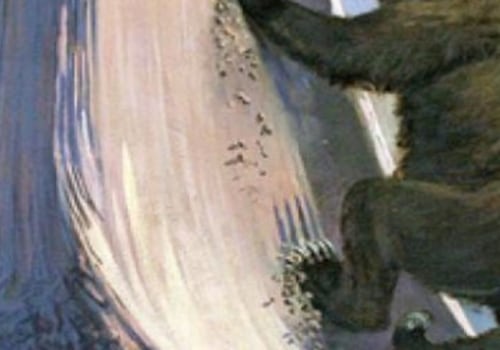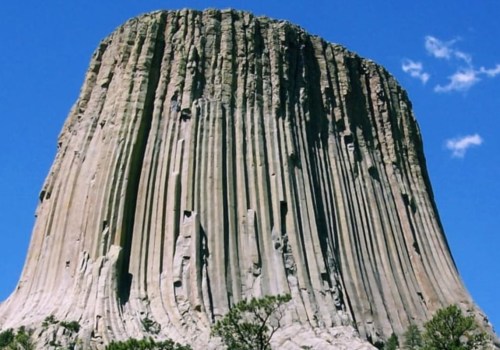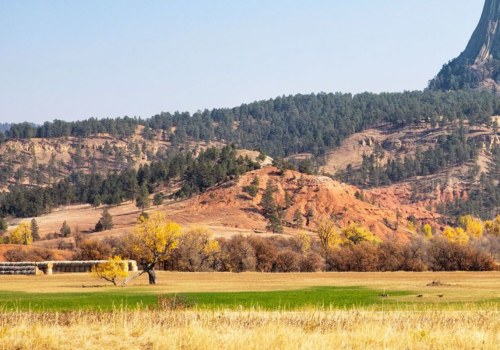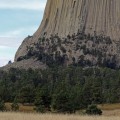The Devil's Tower is a geological wonder that has captivated people for centuries. Located in northeastern Wyoming, the Devil's Tower is an impressive rock obelisk that stands hundreds of feet tall and stretches up to 10 feet wide. Its most striking feature is its columnar junction, which is unparalleled in size. Although the origin of the Devil's Tower remains somewhat obscure, geologists agree that it was formed from molten rock forced upward from deep within the Earth. The characteristic furrowed columns are the result of the contraction that occurred during the cooling of magma.
Geological estimates have placed the Devil's Tower at more than 50 million years old, although it is likely that erosion discovered rock formations just one or two million years ago. Current research supports the conclusion that the Devil's Tower was not a volcano, but rather an igneous intrusion. This formation occurs when magma crystallizes and slowly cools just below the Earth's surface. Over the course of about 50 million years, this magma was pushed into sedimentary rock. Now solid rock, the surrounding sedimentary eventually eroded, leaving a tall, gray core that we now know as the Devil's Tower. Established in 1906 by President Theodore Roosevelt himself, the Devil's Tower is a popular destination for climbers and sightseers alike.
It is estimated that about 5000 people climb here every year. In addition to Devils Tower, Wyoming is home to many other geological wonders, including Yellowstone National Park, which was established in 1872. President Theodore Roosevelt decided that the Devil's Tower should be recognized for its cultural, historical, and scientific importance. For centuries, the Devil's Tower has been a sacred place for the rituals and ceremonies of the indigenous peoples of the region. Geologists Carpenter and Russell studied Devils Tower in the late 19th century and concluded that it was formed by an igneous intrusion. Other theories have suggested that Devils Tower is a volcanic plug or that it is the neck of an extinct volcano.
However, if Devils Tower were a volcanic plug, any volcanic material created by its volcanic ash, lava flows, or volcanic debris would have eroded long ago. As a result, the gray columns of Devils Tower began to appear as an isolated mass above the landscape. Shortly after the 1875 expedition led by Colonel Richard, Bear Lodge Butte became known as the Tower of the Evil God or the Devil. Here are ten mind-blowing facts about the Devil's Tower that you probably didn't know.






